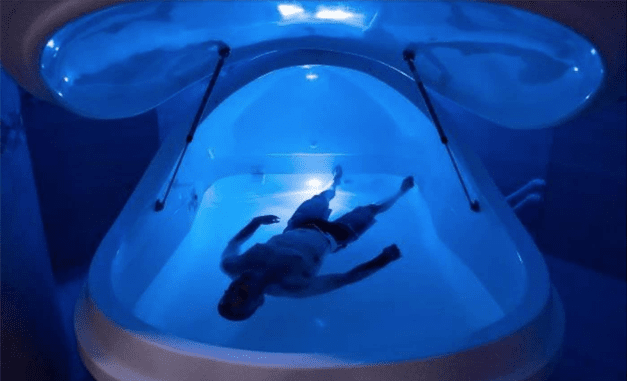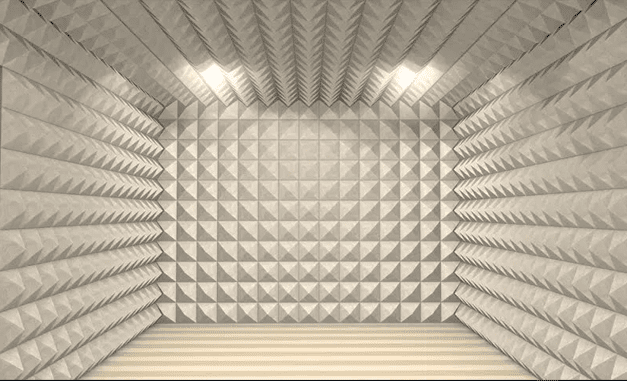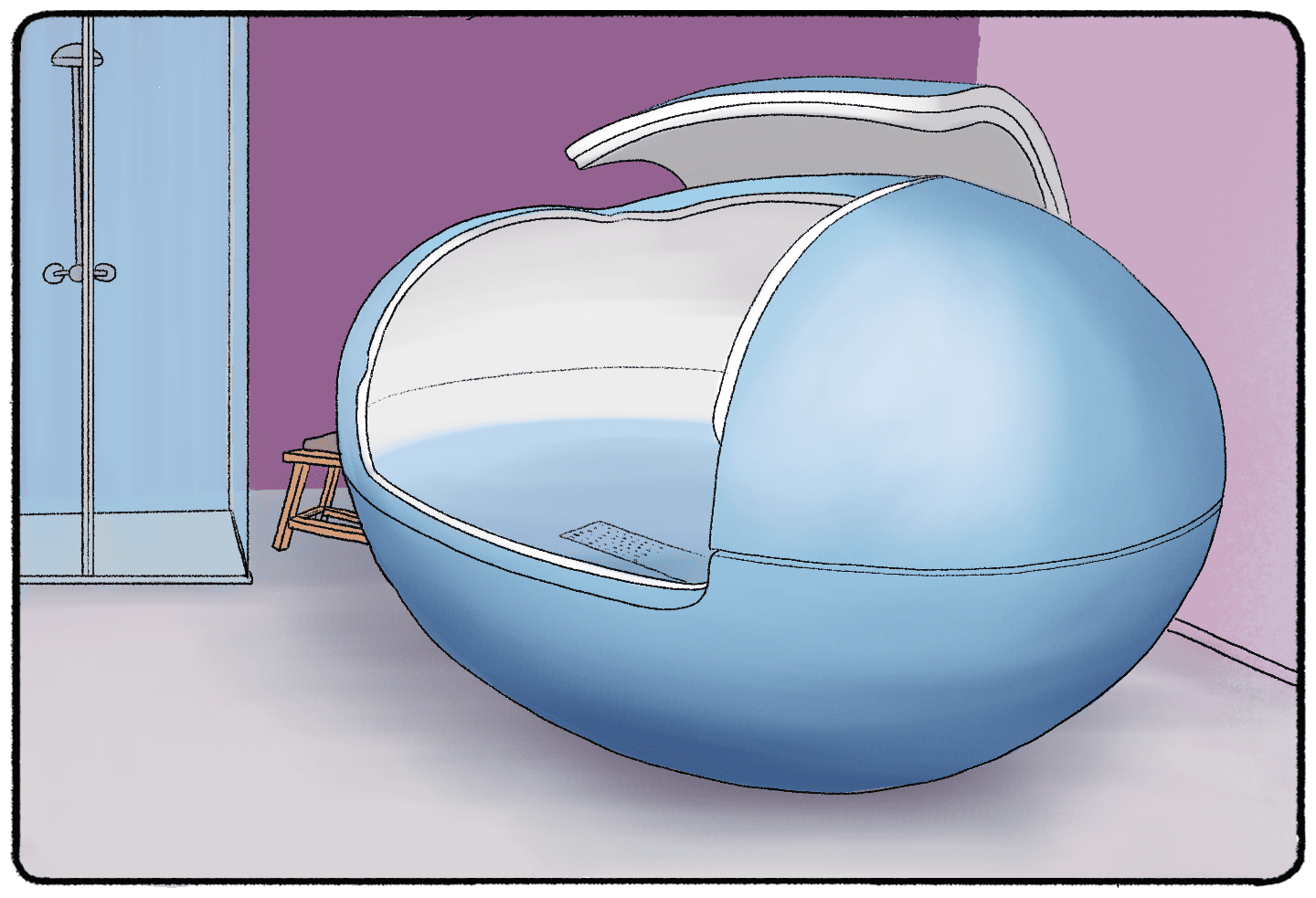If you're here, you may be researching sensory deprivation for a homework project or some research and wish to to know more about it. You're in luck because this page contains everything there is to know. In fact I've even floated in a few sensory deprivation tanks myself!
What is Sensory Deprivation?
Sensory deprivation occurs when one or more of our natural senses (taste, touch, smell, hearing, and sight) is reduced or completely eliminated. You can experience sensory deprivation as part of a damaging or deprived environment, for example, from having a lack of physical or social contact with other human beings. However, it can also be something that is used therapeutically to help improve your physical and mental well-being.
Benefits of sensory deprivation
It’s not all gloom and doom! Studies have shown that people can actually benefit from intentional, temporary, sensory deprivation. This is because you’re giving your brain a break from having to continuously process a ton of sensory and environmental information.
Weirdly, your brain doesn’t actually shut off or slow down when you’re experiencing sensory deprivation – in fact, your brain actually gets more active! It turns out that this is what you want to happen.
It might help if you think of your brain as a computer. When it’s got too many processes going on, things get slow and sluggish, but when it’s free and clear, things speed up. So being more active just means your brain is free to do all the cool stuff you want it to do without being dragged down by sensory overload.
Restricted Environmental Stimulation Therapy (REST)

Restricted Environment Stimulation Therapy, or REST, works on the basis that carefully prescribed sensory deprivation can offer psychological and physical health benefits. There’s a ton of evidence that REST works as a stress management tool because it’s been shown to specifically lower cortisol (a stress hormone) and lower blood pressure. But some think it’s much more than that.
There are two main methods for delivering REST. Both approaches involve creating a dark and soundproofed environment for the person to stay in for a set period of time, with some slight differences.
Chamber REST

This method is possibly less well known. A special chamber – or room – is soundproofed and kept completely dark. For the most part, there’s just a bed for the person to lie down on. And that’s it. Usually you’d be left in a chamber like the one below for way longer than you’d stay in a flotation tank.
This environment might work better for individuals who suffer from additional conditions such as claustrophobia, because you’re less physically restricted, can move around, and may even have access to limited facilities.
Flotation REST
This type of REST might be more familiar to you. The technique uses a more confined form of sensory deprivation involving lying down (or floating) in a dark, soundproofed tank filled with salt water.
Both methods have been shown to be effective, although the flotation approach seems to be more popular, and is even used commercially.
Sensory Deprivation Tank

A sensory deprivation tank or isolation tank creates an environment that removes or significantly reduces sensory information from all five of your senses.
There is some evidence that spending some time in an isolation tank can have physical benefits, which can include:
- improved quality of sleep
- lowered blood pressure
- reduced muscle pain and tension
- fewer headaches
- improved cardiovascular health
Psychologically, a sensory deprivation tank may also improve creativity, increase mindfulness, induce a feeling of optimism or “inner peace”, and ironically allow you to think “outside of the box” which may improve your problem-solving.
Everything about the setup of a sensory deprivation tank is geared towards relaxing your body. By using warm water, the body can enter a state of “homeostasis” – that point where you’re in perfect equilibrium. The inclusion of salts in the water provides the buoyancy – or feeling of weightlessness, which improves blood flow due to a lack of contact pressure (where your skin is coming into contact with something else, such as a mattress or sofa cushion). Finally, the simple act of lying down allows your body’s muscles to relax.
Psychedelic effects
Dr John Lilly laid the groundwork for REST, and his unorthodox work also involved combining psychedelics and flotation in an attempt to understand consciousness.
And there is some overlap in the effect of using REST and psychedelic therapy. Both can result in hallucinations and a disconnect from your physical body. Both are reported to increase creativity and improve problem solving because there is a perception of setting your mind free. And both can be effective in treating or managing: anxiety, depression, chronic stress, eating disorders, substance abuse disorders, muscular fatigue and sports injuries, and maybe even autism in children.
Interestingly, people with existing psychosis, from schizophrenia for example, report having fewer hallucinations while in a sensory deprivation tank than healthy people. Another study testing the effects of Phencyclidine (PCP) also showed a decrease in the number of hallucinations when compared to healthy people. No one’s really sure why this is the case, but it might that healthy individuals’ brains are just overcompensating for a lack of sensory information by creating lots of hallucinations.
Long term sensory deprivation
There’s a ton of research showing that prolonged sensory deprivation, especially in babies and young children, can have serious consequences on their well-being and social and emotional development.
In reality though, when sensory deprivation goes on for a long time, it can have an effect on you no matter how old you are. Some of the effects can be short-lived and minor and can include issues such as boredom and irritability. Or the effects can be longer lasting and include more serious symptoms such as hallucinations and perceptual disturbances, learning and behavioural difficulties, and severe anxiety and depression.
As we’ve seen, sensory deprivation can be pretty bad. Most of the time, this is because severe sensory deprivation can also have dramatic (and sometimes lasting) effects on the brain’s structure and function. Effects can include: memory problems, low I.Q, and personality changes. Because the brain thrives off stimulation and experiences, if you take all that away, your brain can stagnate.
Fortunately, in most cases, your brain can recover (because it’s amazing like that), but only if it’s exposed to good, positive stimulation regularly again.



